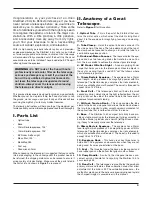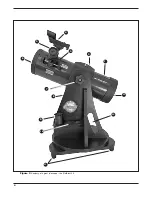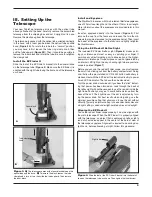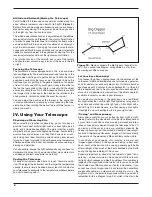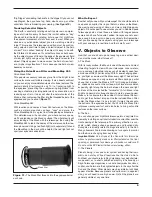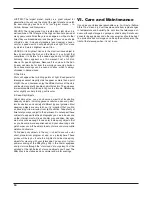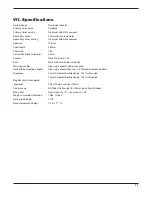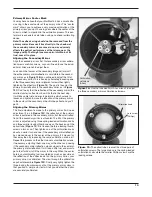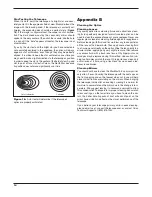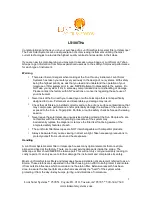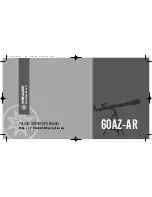
12
Appendix A
Collimation – Aligning the Optics
Collimation is the process of adjusting the optics of a telescope
so they are precisely aligned with one another and with the
telescope tube. For this reflector telescope, the primary and
secondary mirrors must be in precise alignment. Your tele-
scope’s optics were aligned at the factory, and should not need
much adjustment unless the telescope is handled roughly.
Accurate mirror alignment is important to ensure the sharpest
possible images viewed through your telescope, so it should
be checked occasionally. With practice, collimating is relatively
easy to do and can be done in daylight.
It helps to perform the collimation procedure in a brightly lit
room with the telescope pointed toward a bright surface, such
as a light-colored wall. The telescope tube should be oriented
horizontally (parallel to the ground). Placing a piece of white
paper in the telescope tube opposite the focuser (i.e., on the
other side of the secondary mirror from the focuser) will also be
helpful (see
Figure 12
). You will need the included 2mm Allen
wrench and a philips screwdriver to perform the collimation.
To check your telescope’s collimation, remove the eyepiece and
look down the focuser. You should see the secondary mirror
centered in the focuser, as well as the reflection of the primary
mirror centered in the secondary mirror, and the reflection of
the secondary mirror (and your eye) centered in the reflection
of the primary mirror, as in
Figure 13A
. Got all that? Review
it again carefully, and compare what you see to
Figure 13A
.
If anything is off-center, proceed with the following collimation
procedure.
NOTE: Precise collimation is best achieved by using an
optional collimating tool, such as a quick-collimation
cap, a Cheshire eyepiece, or a laser collimator. Check
our website for available collimating tools.
Figures 13B
through 13D
assume that you have an optional Cheshire
eyepiece or collimation cap in the focuser.
Figure 12.
Before collimating your telescope, place a piece of
white paper inside the optical tube opposite the focuser. Make sure
the telescope tube is oriented parallel to the ground during the
collimation process.
Figure 13.
Collimating the optics.
(A)
When the mirrors are
properly aligned, the view down the focuser drawtube should look
like this.
(B)
Here, only part of the primary mirror is visible in the
secondary mirror, so the secondary mirror needs to be adjusted
(tilted).
(C)
Here the secondary mirror is correctly aligned because
the entire primary mirror is visible in it. But the reflection of the
secondary mirror is off-center. So the primary mirror still needs
adjustment.
(D)
Now the primary mirror is correctly aligned, so the
secondary mirror is centered.
A.
B.
C.
D.



